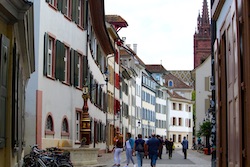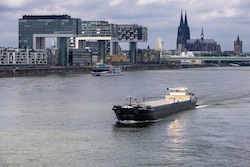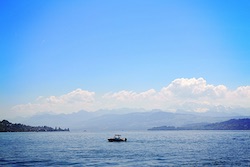Click on the map below to learn more
 |
Bern, SwitzerlandBern is the charming capital city of Switzerland, known for its stunning architecture, rich history, and scenic beauty. Located in the heart of Switzerland, Bern is a popular destination for tourists from all around the world. The Old Town of Bern is a UNESCO World Heritage Site. With its narrow cobbled streets, colorful medieval buildings, and numerous fountains, the Old Town has a unique and unforgettable charm. One of the most iconic landmarks in the Old Town is the Zytglogge, a clock tower that dates back to the 13th century. Visitors can climb to the top of the tower to get a breathtaking view of the city. Another must-see attraction in Bern is the Berner Münster, a gothic cathedral that dominates the city's skyline. The cathedral's towering spire can be seen from miles away, and visitors can climb to the top for another stunning view of the city. The cathedral also houses an impressive collection of stained glass windows and sculptures. Bern is also home to several excellent museums, including the Bern Historical Museum, the Einstein Museum, and the Kunstmuseum, which features an impressive collection of modern and contemporary art. For those who love nature, Bern has plenty to offer. The Aare River runs through the city, and visitors can take a refreshing swim or relax on one of the many riverbanks. The Gurten, a hill just outside of the city, offers stunning panoramic views of the Bernese Alps and is a popular spot for hiking, picnicking, and outdoor concerts.
|
|
|
|
 |
Zurich, SwitzerlandZurich is the largest city in Switzerland and is known for its stunning architecture, cultural landmarks, and breathtaking scenery. Located in the heart of Europe, Zurich has become one of the most important financial centers in the world, attracting visitors from all over the globe. The city offers a unique blend of old-world charm and modern sophistication, with picturesque medieval streets and trendy shops and cafes. Visitors to Zurich can explore its many museums, art galleries, and theaters, including the Kunsthaus Zurich, the Swiss National Museum, and the Zurich Opera House. The city is also home to some of the world's most famous luxury brands, with designer shops lining the exclusive Bahnhofstrasse. But Zurich is not just for the wealthy and elite. The city offers a wealth of outdoor activities, including hiking, cycling, and swimming in the nearby lakes and rivers. Visitors can also take a scenic boat ride on Lake Zurich or enjoy a picnic in one of the city's many parks. |
|
|
|
 |
Basel, SwitzerlandBasel is a picturesque city located in the northwestern corner of Switzerland, near the borders of Germany and France. With its rich history, cultural attractions, and stunning architecture, Basel is a popular destination for tourists from around the world. One of the city's main attractions is its beautiful Old Town, which boasts a number of medieval and Renaissance buildings, narrow winding streets, and charming squares. Visitors can explore the Basel Minster, a gothic cathedral that dominates the city skyline, as well as other notable landmarks such as the Spalentor, a 15th-century gate, and the Rathaus, a grand town hall. Art lovers will also find plenty to see in Basel, which is home to a number of world-class museums. The Kunstmuseum Basel, for example, has one of the most comprehensive collections of art in Europe, with works by masters such as Van Gogh, Monet, and Picasso. The Fondation Beyeler, situated on the outskirts of the city, houses an impressive collection of modern and contemporary art in a stunning building designed by architect Renzo Piano. Another attraction in Basel is the Rhine River, which runs through the city and provides visitors with scenic views and opportunities for boat rides, swimming, or simply strolling along the riverbanks. The city also has a number of parks and gardens, including the Botanical Gardens and the Sankt Johanns-Park.
|
|
|
|
 |
Lausanne, SwitzerlandLausanne is a charming city located on the shores of Lake Geneva in Switzerland. Known for its stunning scenery, rich history, and vibrant cultural scene, Lausanne is a popular destination for tourists from around the world. One of the city's most iconic landmarks is the Olympic Museum, which is dedicated to the history of the Olympic Games and includes a range of exhibits, artifacts, and interactive displays. The museum is located in a picturesque park overlooking Lake Geneva and offers stunning views of the surrounding mountains. Another must-see attraction in Lausanne is the Cathedral of Notre-Dame, a gothic masterpiece that dates back to the 12th century. Visitors can climb to the top of the cathedral for a panoramic view of the city and lake. Lausanne is also home to a number of excellent museums and galleries, including the Musée de l'Elysée, which focuses on photography, and the Collection de l'Art Brut, which showcases works by self-taught artists. The city also has a vibrant performing arts scene, with several theaters and music venues offering a range of performances throughout the year. Nature lovers will appreciate Lausanne's beautiful parks and gardens, including the Parc de Mon Repos, which features a stunning rose garden, and the Jardin Botanique, which houses a collection of exotic plants and trees from around the world. The city's lakefront promenade is also a popular spot for jogging, cycling, or simply enjoying the view.
|
|
|
|
 |
The AlpsThe Alps are a majestic mountain range that stretches about 750 miles across eight European countries, including Switzerland, France, Italy, Austria, and Germany. Known for their stunning natural beauty and diverse ecosystems, the Alps are a popular destination for outdoor enthusiasts, adventurers, and nature lovers. At 15,774 feet, Mont Blanc (France), is the highest mountain in the range. The Alps are home to a variety of wildlife, including ibex, chamois, marmots, and eagles, as well as a range of flora and fauna that are unique to the region. The mountain range is also dotted with charming alpine villages and historic towns, offering visitors a glimpse into the region's rich cultural heritage. During the winter months, the Alps become a winter wonderland, with ski resorts and snow sports attracting visitors from around the world. But the region is also popular during the summer, when hikers, climbers, and mountain bikers come to explore the mountain trails and take in the breathtaking views.
|
|
|
|
 |
The Rhine RiverThe Rhine River is one of the longest and most important rivers in Europe, flowing through six countries and connecting the Alps to the North Sea. It begins in the Swiss Alps, and flows through Germany, Austria, Liechtenstein, France, and the Netherlands before emptying into the North Sea. The Rhine River is an important transportation route, with cargo ships transporting goods between cities and countries along its length. It is also a popular destination for river cruises, with tourists enjoying the scenic views and cultural attractions along the riverbanks. The river is lined with charming historic towns and cities, including Basel, Strasbourg, Cologne, and Rotterdam, each offering a unique blend of architecture, culture, and history. Visitors can explore medieval castles, ancient ruins, and museums dedicated to the river's rich cultural heritage. The Rhine River also plays an important role in the region's ecosystem, supporting a variety of plant and animal species. The river is home to freshwater fish like trout and salmon, and is an important breeding ground for migratory birds like storks and herons. |
|
|
|
 |
Lake ZurichLake Zurich is a stunning lake located in the heart of Switzerland. It is roughly 25 miles in length and has a maximum depth of 469 feet. Surrounded by the snow-capped peaks of the Swiss Alps and dotted with picturesque towns and villages, Lake Zurich is a popular destination for tourists from around the world. One of the best ways to experience the lake is by taking a boat tour, which offers stunning views of the surrounding landscape and the crystal-clear waters of the lake. Visitors can also rent a paddleboat or kayak and explore the lake at their own pace. The towns and villages surrounding the lake offer a range of cultural and historical attractions, such as the charming town of Rapperswil, which is known for its medieval castle and lovely lakeside promenade. The town of Zurich, which is located at the northern end of the lake, offers a range of museums, galleries, and cultural events, as well as excellent shopping and dining options. Nature lovers will appreciate the many parks and nature reserves surrounding the lake, such as the Pfannenstiel Nature Park, which offers hiking trails, picnic areas, and stunning views of the lake and mountains. The lake itself is also a popular spot for swimming, fishing, and other water sports. |
| Population: | 84,300,000 (2021) |
| Area: | 302,585 sq. miles |
| Capital City: | Ankara |
| Largest City: | Instanbul |
| Currency: | Turkish Lira |
| Official Language: | Turkish |
| GDP (Gross Domestic Product) | $794 Billion (19th) |
| Back to Map | |
|
|
 |
|
The Swiss flag is one of the most recognizable flags in the world. The flag consists of a red background with a white cross in the center. It is a simple and striking design that has been used for centuries. The origins of the Swiss flag can be traced back to the 14th century. The white cross on a red background was used as a military ensign by Swiss soldiers fighting in the Battle of Laupen in 1339. Over time, the design became more widely used and eventually became the official flag of Switzerland in the 19th century. The Swiss flag has come to symbolize the country's independence, neutrality, and democracy. It is often used as a symbol of Swiss culture and identity. The flag is displayed prominently in public places, including government buildings, schools, and sports arenas. One interesting fact about the Swiss flag is that it is the only square flag among the UN member countries. This makes it stand out among the many rectangular flags that are commonly used around the world. The Swiss flag is also notable for its simplicity. Unlike many other national flags, it does not include any symbols or text other than the white cross on the red background. This simplicity is part of what makes the flag so easily recognizable and memorable. Back to Map |
|
